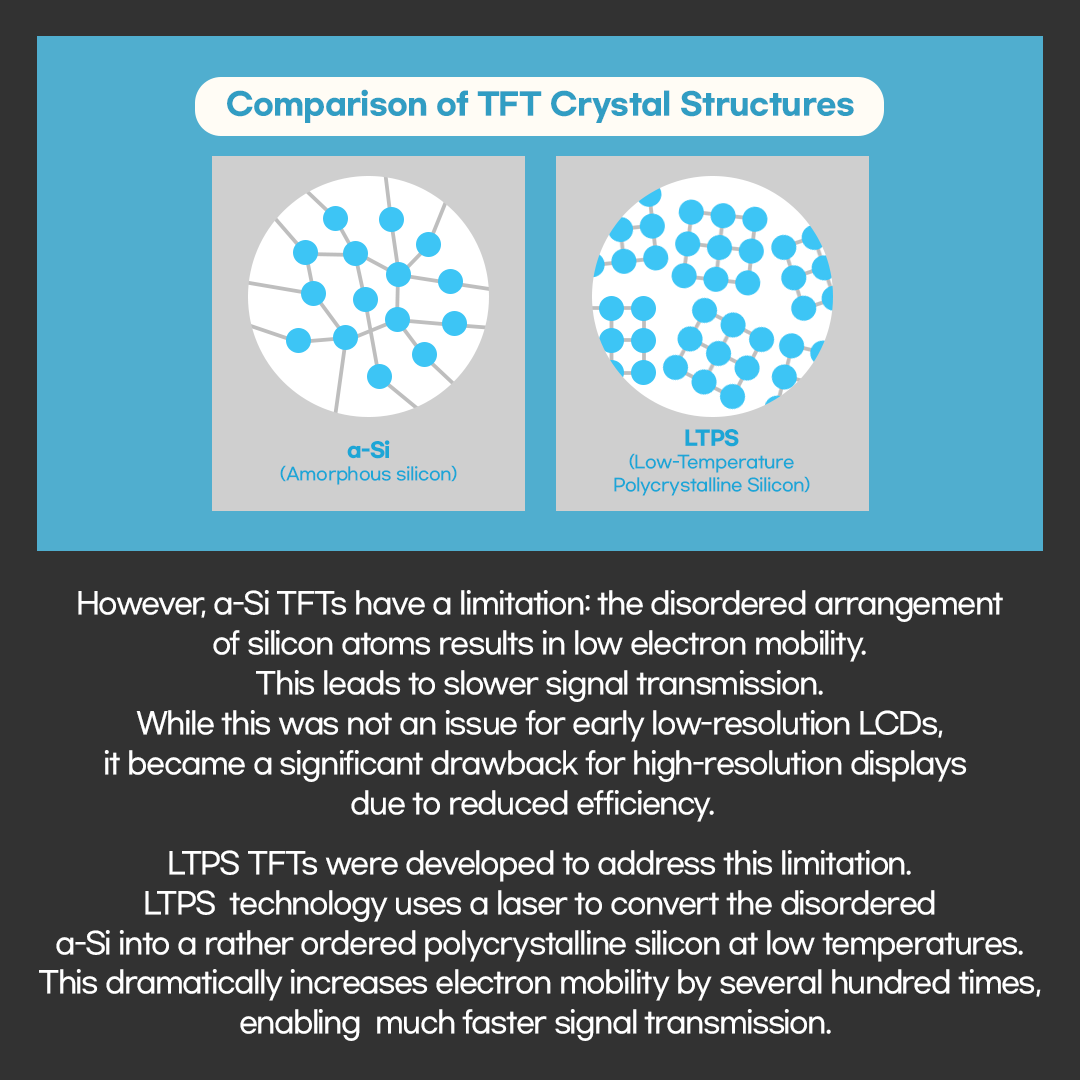**What is amorphous silicon (a-Si)?**
a-Si is *a commonly used TFT technology.*
> **What are the three classifications of Thin Film Transistors (TFTs) depending on their material properties?**
> Depending on their material properties, TFTs can be classified as:
> * Amorphous silicon (a-Si).
> * Low-Temperature Polycrystalline Silicon (LTPS).
> * Oxide.
**What does the term "amorphous" refer to?**
The term "amorphous" refers to *a non-crystalline solid.*
> **How are the atoms arranged in a non-crystalline solid?**
> In a non-crystalline solid, the atoms are arranged *in a disorderly manner.*
**What are three reasons why amorphous silicon (a-Si) was widely used?**
Three reasons why a-Si was widely used are:
1. They're easy to manufacture.
2. They're easy to achieve screen uniformity with.
3. They're suitable for large displays.
**What is the limitation of amorphous silicon (a-Si) and what causes it?**
The limitation of a-Si is *it's low electron mobility caused by the fact that its atoms are disordered.*
> **How does low electron mobility affect signal transmission?**
> Low electron mobility affects signal transmission *by making it slower and less efficient.*
>
> **Was the limitation with using amorphous silicon (a-Si) a problem for early, low-resolution displays?**
> *No*, the limitation with using amorphous silicon (a-Si) wasn't a problem for early, low-resolution displays.
**What was developed to address the limitation of amorphous silicon (a-Si)?**
To address the limitation of a-Si, *LTPS* was developed.
> **How is Low-Temperature Polycrystalline Silicon (LTPS) made?**
> LTPS is made *by using a laser to convert the disordered a-Si into ordered polycrystalline silicon at low temperatures.*
**What is the diagram for the difference between the crystal structure of amorphous silicon (a-Si) and Low-Temperature Polycrystalline Silicon (LTPS)?**
The diagram for the difference between the crystal structure of a-Si and LTPS is:
